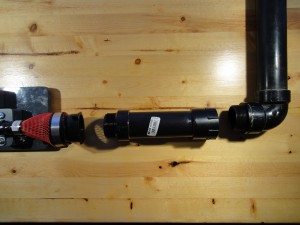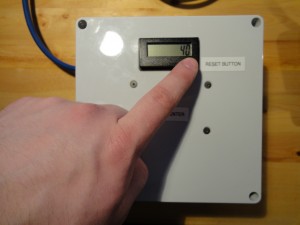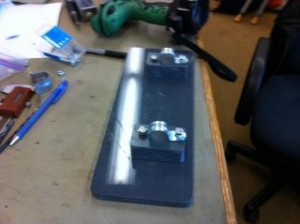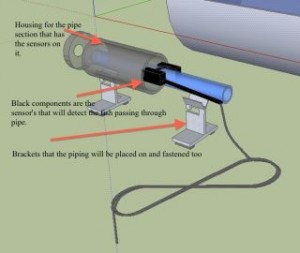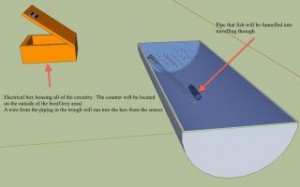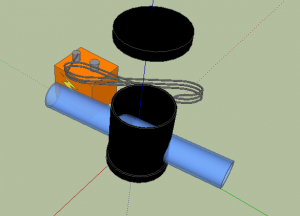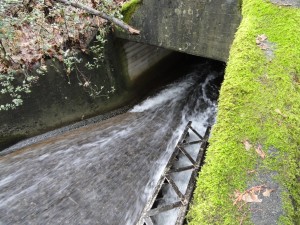The Community Service Learning (CSL) program for Civil 202 is designed to meet a community organization’s needs while providing UBC Civil Engineering students with valuable hands-on skills in team-building, professional communication, and project management.
Our CSL group is pleased to be working with the Pacific Streamkeeper’s Federation in creating and implementing a counting station which will log the number of fish fry that pass through selected culverts. The design, supplied by NSSK, will be implemented at the Morten Creek Salmon Enhancement Facility in North Vancouver. The proposed implementation date is February 20th to the 24th, with a final presentation to Zo Ann Morten, the project coordinator, after March 17th.
The Pacific Streamkeeper’s Federation was initiated in May 1995 and is a non-profit organization dedicated to supporting community streamkeeper groups throughout British Columbia and the Yukon. The organization’s objectives are to help coordinate and provide support for streamkeeper activities and training, promote streamkeeper and enhancement issues as well as local management of aquatic resources.
Assisting in the cause of good watershed practices and environment protection is an exciting prospect for our CSL group. At this early stage in the project, we look forward to meeting with Zo Ann Morten and key players such as DFO, North Shore engineers and volunteers. It is our hope that through this orientation on the project design, as well as on fish and culverts, our team will be able to take away a practical approach to completing the project.
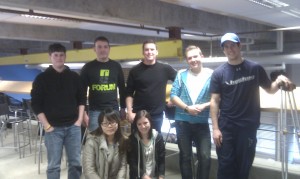
From top left to right, bottom left to right: Matt Stevens, Dale Healey, Fraser Peterson, Michael Levin, Justin Brown, Lucia Pei, Diane Currie
BIOS:
Dale Healey, team leader:
I am Dale Healey a Civil Engineering student at the University of British Columbia. For the past 3 years I have been working within the construction industry on large scale heavy civil projects where I have taken on technical and supervisor roles. As team organizer / leader I plan on ensuring that our client is provided with a final product of the upmost quality in an efficient and timely manner.
Diane Currie, secretary:
Hi! My name is Diane and I am a second year Civil Engineering student at UBC. I am involved in extra-curricular activities at UBC within the EUS and UBC Peer Programs, as well as other student groups. My interests include listening to and playing music, reading books and doing sports.
Fraser Peterson, mentor liaison:
Hi, I’m Fraser Peterson. I’m a second year civil engineering student from Surrey BC. I enjoy playing basketball and ball hockey, as well as following my favorite pro teams the Blue Jays and Canucks. This project looks very interesting and I am looking forward to working on it.
Justin Brown, client liaison:
Hi, my name is Justin Brown. I’m from the Kootenays, love the outdoors, and enjoy challenges. I’m an active person, involved in all sports, and have a new passion for the sport of triathlon.
Lucia Pei, team organizer:
Hi, my name is Lucia. I am a second year engineering student. Sometimes, I am a very active person, and sometimes I am quiet. I enjoy painting, reading and also working with people because their ideas always inspire me. I hope I can do well on this project.
Matt Stevens, document control:
Hi everyone. My name is Matt Stevens and I am a second year Civil Engineering student from Coquitlam. I enjoy listening to and playing music; I have been playing the drums for the past eight years now. I look forward to meeting you and am pleased to be working with the Streamkeepers Federation on this project.
Michael Levin, blog coordinator:
Hi, my name is Michael and I am a second year Civil Engineering student at UBC. I am involved in numerous student groups associated with Vancouver Hillel and am excited to learn about streamkeeper practices through this project.

